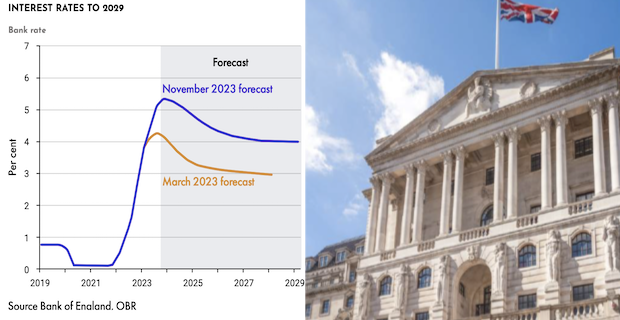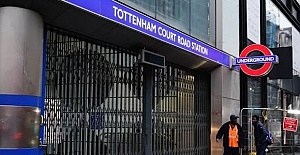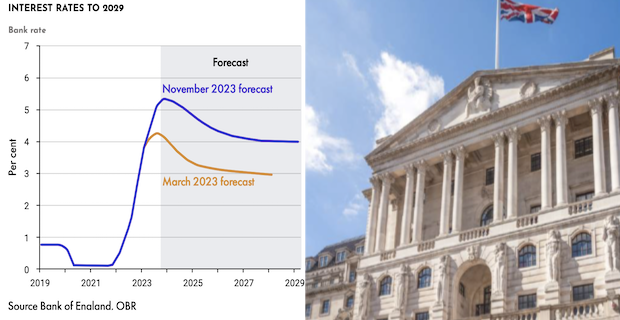The OBR releases its five-year forecast for the UK economy and public finances.Support for SMEs, R&D, business rate support and more.This year’s Autumn Statement was somewhat of a step change compared to the sobering state of the economy this time last year. With a fiscal windfall of £27bn, the Chancellor was able to turn his attention to cutting taxes.
As Jeremy Hunt stepped up to the dispatch box for his second Autumn Statement as Chancellor of the Exchequer, the nation’s attention was firmly fixed on potential tax cuts.
Here is the Accounting direct plus ADPL's Autumn Statement Last autumn, the Chancellor used his fiscal speech to brace the UK for a “storm” of tax rises. This year, however, with a fiscal windfall of around £27bn to play with, Hunt was able to turn his attention to reducing the tax burden for households and businesses. The Chancellor announced “110 measures to help grow the economy”, including a 2% cut to the main rate of National Insurance (NI) from 6 January, alongside incentives to encourage business investment such as permanently extending the full expensing initiative. The speech may have done more to answer calls from the backbenches for tax cuts than was expected a few months ago, but Hunt held off from announcing any changes to inheritance tax or income tax, despite much media speculation. Hunt also used his speech to set out the Government’s new ‘back to work plan’, promising additional support for those with health conditions, raising the minimum wage and introducing stricter benefits rules to encourage more people to rejoin the workforce. In this report, we provide a comprehensive overview of the Chancellor’s key announcements, guiding you through the intricacies of the latest fiscal changes and dissecting the impact on businesses and individuals alike. While last year the Chancellor used his fiscal speech to brace the UK for the “storm” of tax rises, this year Hunt was able to turn his attention to cutting taxes.
ECONOMIC OUTLOOK OBR DOWNGRADES THE ECONOMY’S GROWTH FOR THE NEXT TWO YEARS
Whilst Jeremy Hunt may have counted up no fewer than 110 measures to “help the British economy” in his Autumn Statement, the Office of Budget Responsibility (OBR) has downgraded its economic growth forecast for 2024 and 2025 from its previous expectations in the spring. The objective of the OBR’s economic report is to summarise the UK economy, taking into account the changes made to national spending and the tax system in the accompanying Autumn Statement. In its latest report, the OBR said that the economy has proved more resilient to the shocks of the pandemic and energy crisis than it had anticipated. However, it also added that inflation has also been more persistent and interest rates higher than it expected back in March. Overall, the economy will grow by 0.6% this year. Back in March 2023, the OBR predicted that the economy would shrink by 0.2% this year.
INFLATION AND LIVING STANDARDS AUTUMN STATEMENT 2023
Last week the Office for National Statistics (ONS) confirmed that the rate of inflation has declined to 4.6%. The annual rate slowed in October from the 6.7% reported in September, largely due to the lower energy price cap imposed on households at the start of October.“The easing in the annual inflation rates principally reflected negative contributions from three divisions, with large downward effects from housing and household services, food and non-alcoholic beverages, and restaurants and hotels,” the ONS said.The lower consumer prices index (CPI) inflation figure means the Prime Minister’s pledge to halve the rate of inflation this year is currently met. The OBR then expects the economy to grow by 0.7% in 2024. For 2025, GDP is forecast to rise by 1.4%, 1.9% in 2026, 2.0% in 2027, and 1.7% in 2028.
When the Spring Budget was announced, the OBR had said a return to growth was expected at a stronger 1.8% in 2024 and 2.5% in 2025, meaning the expected growth for the next two years has been downgraded.
Inflation peaked at 11.1% in October last year and whilst better than it was - it has yet to return to what the Bank of England (BoE) calls “normal levels” of around 2%. It says it expects inflation to continue to slow and reach 2% by the end of 2025.
Living standards, as measured by real household disposable income (RHDI) per person, are forecast to be 3.5% lower in 2024-25 than their pre-pandemic levels. While this is half the peak-to-trough fall the OBR expected in March, it still represents the largest reduction in real living standards since records began in the 1950s. RHDI per person recovers its pre-pandemic level in 2027-28 and the OBR estimates that the reduction in the rate of NICs announced in the Autumn Statement will boost real household incomes by around 0.5% at the end of the forecast. Unemployment is now expected to peak at 4.6% in the second quarter of 2025 as GDP growth slows and spare capacity opens up. The ONS said that while labour market participation was falling, labour demand has weakened, with vacancies falling from a peak of 1.3m in May 2022 to around 960,000 in October 2023.

PUBLIC FINANCES
On public debt, Hunt stuck to the two new fiscal rules he introduced a year ago, dictating that underlying debt must fall as a percentage of GDP in five years’ time.
The OBR forecasts that underlying debt will be 91.6% of GDP next year, 92.7% in 2024-25, peaking at 93.2% in 2026-27, before declining in the final two years of the forecast to 92.8% in 2028-29.
£27BN FISCAL WINDFALL
According to the OBR, the Chancellor had financial headroom of around £27bn, almost all of which he spent in three areas: a 2% cut in NICs, permanent tax relief for business investment, and further welfare reforms, “leaving debt falling by a narrow margin in five years”. The report continued:“Higher inflation boosts tax revenues but also welfare benefits while higher interest rates push up debt servicing. But because departmental spending is left largely unchanged, this delivers a net fiscal windfall of £27bn.” The rate of NICs announced in the Autumn Statement will boost real household incomes by around 0.5% at the end of the forecast.
INTEREST RATES TO 2029
Indeed, according to BoE governor, Andrew Bailey, more rate rises could be on the cards, saying it is “far too early to be thinking about rate cuts”.
The OBR confirmed that markets expected the Bank Rate to peak at “only a little above” the current 5.25% in the final quarter of the year, before falling back to 4% by 2029.Following a series of 14 consecutive base rate hikes, the BoE maintained its base rate at 5.25% for the first time in nearly two years this September. The rate also remained unchanged in November, with the next monetary policy decision expected on 14 December.
The sharp fall in inflation does not yet mean the BoE is ready to start reducing interest rates.
PERSONAL CHANGES REWARDING HARD WORK
The Government’s new ‘back to work’ plan formed a significant part of the 2023 Autumn Statement. Building on the £7bn employment package introduced earlier this year, the Chancellor says the plan will help more than one million people re-enter the workforce.
Hunt’s package of pay rises, tax cuts and extra support for jobseekers aims to make it easier and more rewarding for people
to find work and stay employed. The Government also plans to introduce tougher benefits rules to incentivise more people to “get off benefits and move into work”.
NATIONAL LIVING WAGE RISE
In line with the overarching theme of “making sure work pays”, the Chancellor announced he would raise the National Living Wage (NLW) from £10.42 to £11.44 per hour in April 2024. This marks the largest ever cash increase since the rate was introduced in 2016, and means a full-time worker on the NLW will earn more than £1,800 extra a year.
Hunt also unveiled plans to reduce the age threshold for the National Living Wage (NMW) from 23 to 21. As a result, all 21 and 22-year-olds currently on minimum wage will receive a particularly significant boost to their income, with their hourly wages rising from £10.18 to £11.44. The minimum wage for 18 to 20-year-olds will also rise from £7.49 to £8.60 an hour, while the minimum hourly rate for apprentices is set to increase by over 20% from £5.28 to £6.40 an hour. According to Hunt, these measures will effectively “end low pay” in the UK, directly benefitting around 2.7m low-paid workers nationwide.
AUTUMN STATEMENT 2023
CLASS 1 NATIONAL INSURANCE CONTRIBUTIONS
The Chancellor waited until the end of his speech to announce a 2% cut to the main rate of National Insurance – a move which is set to benefit 27 million people.
Unusually, rather than waiting until the start of the new tax year, the change will be implemented for paydays on or after 6 January 2024. Where employers are unable to change their systems in time, they are permitted to make the change at the earliest opportunity with appropriate adjustments in respect of overpayments.
This reduction will only apply to annual earnings between £12,570 and £50,270, meaning that the maximum saving is £754 a year, while the average worker on £35,400 salary will be £450 better off.
Those interested in additional examples can consult the Government’s factsheet, which lists cases including, among others, a senior nurse, an average full-time nurse and an average police officer. Individuals will still be able to pay voluntary Class 3 NICs should they wish to do so in order to fill gaps in their National Insurance record and thereby enhance their state pension. The weekly Class 3 rate will remain at £17.45 next year.
The following rates will apply from April 2024:
RATE
Adults (23+) aka the National Living Wage
Adults (21+) aka the National Living Wage
Adult (21 – 22)
Youth Development (18 – 20)
Under 18 (above compulsory school leaving age)
Apprentice
Accommodation Offset daily rate
FROM APRIL 2023
£10.42

EFFECTS ON INDIVIDUALS AND BUSINESSES
While many individuals will take home larger pay packets thanks to the measures announced in the Autumn Statement, current threshold freezes are still pulling more people into higher tax bands.Indeed, the OBR’s report predicted that personal threshold freezes will raise a total £46bn a year for the Treasury by 2028 as wages rise with inflation.Some industry experts have expressed concern about the impact of the NLW increase on employers. In October 2023, company insolvencies in England and Wales rose by 18% compared to the same period a year earlier. As a result, the measure could put significant financial strain on businesses as they continue to struggle with high operating costs.
James Lowman, chief executive at the Association of Convenience Stores (ACS), said the measure would be “tough for many local shops to afford”, citing employee wages as the biggest expense for most retailers.
OTHER PERSONAL ANNOUNCEMENTS
BENEFITS
Universal Credit payments and other welfare benefits will be increased by 6.7% next April. This increment translates into an additional £470 a year for about 5.5 million households. Other changes to benefits were among Hunt’s most controversial, including: Incentivising work for benefits claimants:
The Chancellor plans to push 200,000 people into work, focusing on the sick and disabled. This includes mandatory work placements and stopping benefits for those not actively seeking employment.
Stricter benefits sanctions: There will be harsher benefits rules and sanctions, particularly affecting people who cannot work due to disabilities, illness, or
care responsibilities.
Impact on disabled and vulnerable individuals: The Government plans to tighten the Work Capability Assessment, making it more challenging for individuals to access additional money and protection from benefit sanctions.
PENSIONS TRIPLE LOCK
Despite reports to the contrary, the Chancellor remained committed to
the ‘triple lock’ on pensions, meaning that pension payments will rise by 8.5% next April.
Under the triple lock, the Government is supposed to increase the state pension each tax year by either the previous September’s rate of inflation (6.3%), the rate of wage growth (8.5%), or 2.5%, whichever is higher.
Announcing the decision, Hunt said: “There have been reports we would uprate the triple lock by a lower amount to smooth out the effect of high public sector bonuses in July, but that would have been particularly difficult for 1m pensioners whose only income is from the state.
“So instead, today we honour our commitment to the triple lock in full.”
HOUSING AND PRIVATE RENTS
In response to the housing crisis, the local housing allowance rate will be increased to cover the lowest 30% of market rents. This measure is expected to benefit
1.6 million households, with an average support of £800 per household next year.
SUPPORT FOR THE SELF-EMPLOYED
Acknowledging the important role small businesses play in the UK economy, the Chancellor announced measures to reward self-employed individuals for their hard work. These changes included eliminating Class 2 National Insurance and reducing Class 4 National Insurance from 9% to 8%. According to Hunt, these measures will save self-employed individuals an average of £350 annually.
In December 2022, it was announced that the introduction of Making Tax Digital for income tax self assessment (MTD ITSA) for landlords and the self-employed would be staged. Those with income over £50,000 will come in first from April 2026, and those with between £30,000 and £50,000 will come in a year later in April 2027.It’s now been confirmed that those with income under £30,000 will not be brought into MTD ITSA for now. However, this decision will be kept ‘under review’, so there’s every chance the threshold could come down in the future.
BUSINESS CHANGES
BOLSTERING SUPPORT
The Autumn Statement intends to bolster British businesses of all sizes to eliminate investment barriers and close the productivity gap with other G7 nations.
The long-view is to unlock £20bn in additional business investments annually for the next decade. The plan is set to “reward hard work” and includes 110 growth measures for businesses.Here are a few of the headline announcements.
FULL EXPENSING FOR BUSINESSES
Hailed as a key feature of what the Chancellor called “the largest business tax cut in modern British history,” one of the most significant business announcements was Hunt’s decision to make the full expensing scheme permanent.Full expensing provides 100% first-year relief to companies on qualifying main rate plant and machinery investments, including IT equipment. Initially introduced in the Spring Budget 2023, the scheme was due to expire in March 2026. The Government predicts this will unlock an additional £14bn in investment over the OBR’s forecast period, helping to drive sustainable economic growth.
BUSINESS RATES SUPPORT PACKAGE
A £4.3bn business rates support package over five years was announced. This includes freezing the small business multiplier for the fourth consecutive
year and extending Retail, Hospitality and Leisure (RHL) relief to continue supporting vulnerable businesses.
This business rates package is part of a broader effort to invest an additional £20bn in business per year over the next decade.
The main features of this measure include:
Extended relief for hospitality and retail:
The package extends a 75% business rates discount for retail, hospitality and leisure businesses for an additional 12 months, offering relief up to £110,000. Despite warning that support measures cannot continue indefinitely, the Chancellor said the extension would save the average pub about £12,800 annually.
Freezing the small business multiplier:
The small business multiplier is frozen for another year, aiding vulnerable businesses. However, the standard business multiplier will see a 6.4% increase, which could put more pressure on consumer prices and inflation.
Additional measures: The statement also includes a freeze on alcohol duty.
PENSION REFORMS AND INVESTMENT
The Autumn Statement includes pension reforms to unlock £75bn of financing for high-growth companies by 2030.
These reforms aim to streamline the pensions market by encouraging the consolidation of pension schemes.
This move anticipates that most savers will be part of large schemes, potentially exceeding £30bn by 2030.
For businesses, this translates into a more efficient, cost-effective pension system. Pensions will include a stronger focus on private equity, injecting more capital into businesses.
INVESTMENTS IN R&D AND INNOVATION
Hunt announced his plans to invest over £750m in research and development (R&D) to maintain the UK’s leadership in science and technology, including substantial funding for discovery fellowships and business innovation.Meanwhile, the extension of the enterprise investment scheme (EIS) and venture capital trusts until 2035 ensures continued support for start-ups and SMEs.
SUPPORT FOR SMES
The Chancellor’s Statement also included several measures to bolster the growth of SMEs.
1. Freezing small business rates: The Government continues its support
by freezing the small business rates multiplier, reducing operational costs for SMEs.
2. Addressing late payments: Stricter payment timelines for bidders on
large Government contracts are being introduced to alleviate cashflow issues caused by late payments, a common challenge for SMEs.
3. Enhancing digital adoption and skills: Expanding the ‘Made Smarter’ program and the ‘Help to Grow’ initiative will assist SMEs in adopting digital technologies and enhancing management skills crucial for boosting productivity and growth.
4. Supporting self-employed individuals:
Tax cuts for the self-employed, including a reduction in Class 4 NICs and the abolishment of Class 2 NICs, are set to benefit around two million people.
5. Clarifying tax deductibility for training: HMRC will update guidelines on the tax deductibility of training costs for sole traders and the self-employed, clarifying what counts as an eligible business expense.
The Autumn Statement 2023 ushered in significant reforms to R&D tax relief to foster innovation across the business landscape.
From April 2024, the current R&D expenditure credit (RDEC) for larger businesses and the SME R&D scheme for smaller enterprises will merge into one scheme.
This will reduce the tax rate for loss-making companies from 25% to
19% and lower the threshold for additional support from 40% to 30%, expanding eligibility to about 5,000 more SMEs.
Companies fluctuating below the 30% threshold will also receive a one-year grace period, allowing more businesses to become classified as ‘R&D-intensive’. These reforms are expected to provide an additional £280m in relief annually
by 2028/29.
However, it’s currently unclear which companies will benefit most from the consolidation of the two schemes: SMEs or larger businesses.
CLIMATE CHANGE AGREEMENT SCHEME EXTENSION
Chancellor Jeremy Hunt also discussed the UK’s commitment to energy security and achieving net zero. Achieving this will include significant public and private investment in low-carbon energy.
To support this transition, the Government is allocating £185m through the Industrial Energy Transformation Fund for energy-efficient technologies and offering around £300m yearly in tax relief under the new Climate Change Agreement scheme.
SECTOR-SPECIFIC ANNOUNCEMENTS
Numerous sector-specific announcements also centred on manufacturing, green industries, digital technology and AI, life science and the creative industries.
ADVANCED MANUFACTURING
Acknowledging the crucial role of advanced manufacturing sectors, the Government plans to invest £4.5bn in the automotive, aerospace, life science and green industries.
DIGITAL TECHNOLOGY AND AI
Substantial investments in artificial intelligence (AI) and digital technologies will help unlock domestic computing power for AI R&D.
LIFE SCIENCES
Life science businesses will receive increased funding for clinical trials, manufacturing investments in life sciences and genotyping.
CREATIVE INDUSTRIES
New funding and enhanced tax incentives for creative businesses, particularly
for the visual effects sector, will be introduced to help grow the industry. This includes focusing on film and high-end TV production.
IMPORTANT INFORMATION
The way in which tax charges (or tax relief, as appropriate) are applied depends upon individual circumstances and may be subject to change in the future. The information in this report is based upon our understanding of the Chancellor’s 2023 Autumn Statement, in respect of which specific implementation details may change when the final legislation and supporting documentation are published.
This document is solely for information purposes and nothing in this document is intended to constitute advice or a recommendation. You should not make any investment decisions based upon its content. Pension eligibility depends on individual circumstances.
Whilst considerable care has been taken to ensure that the information contained within this document is accurate and up-to-date, no warranty is given as to the accuracy or completeness of any information.
Talk to us about these changes
293 Green Lanes, London, N13 4XS
www.accountingdirectplus.com
020 8886 9222


 Enfield Labour welcomes new court order to stop antisocial behaviour in Edmonton Green
Enfield Labour welcomes new court order to stop antisocial behaviour in Edmonton Green David Lammy arrives in Downing Street after becoming deputy prime minister
David Lammy arrives in Downing Street after becoming deputy prime minister CTCA UK Condemns the Political Forcing Out of Afzal Khan MP for Engaging with Turkish Cypriots
CTCA UK Condemns the Political Forcing Out of Afzal Khan MP for Engaging with Turkish Cypriots Tatar: “Reaction to MP’s TRNC visit is yet another stark example of the Greek Cypriot leadership’s primitive and domineering mentality”
Tatar: “Reaction to MP’s TRNC visit is yet another stark example of the Greek Cypriot leadership’s primitive and domineering mentality” Latest! Israeli navy intercepts Global Sumud Flotilla as it approaches Gaza to break siege
Latest! Israeli navy intercepts Global Sumud Flotilla as it approaches Gaza to break siege Enfield Labour Calls for Public Feedback on Crime and Safety Concerns
Enfield Labour Calls for Public Feedback on Crime and Safety Concerns Important Travel Updates: London Underground and DLR Strike Action
Important Travel Updates: London Underground and DLR Strike Action Team Enfield ranks fifteenth the in London Youth Games
Team Enfield ranks fifteenth the in London Youth Games Champions League, Liverpool lose at Galatasaray
Champions League, Liverpool lose at Galatasaray Liverpool flew out for their Champions League match against Galatasaray
Liverpool flew out for their Champions League match against Galatasaray Enfield Council has approved plans for Surf London
Enfield Council has approved plans for Surf London Zlatan Ibrahimović receives UEFA President’s Award
Zlatan Ibrahimović receives UEFA President’s Award Enfield’s Crews Hill and Chase Park shortlisted for potential New Town
Enfield’s Crews Hill and Chase Park shortlisted for potential New Town Important milestone achieved with no hotel placements for temporary accommodation
Important milestone achieved with no hotel placements for temporary accommodation London tube strike shuts down services as TfL website crashes
London tube strike shuts down services as TfL website crashes HMRC TARGETS ERRORS IN MARGINAL RELIEF CLAIMS
HMRC TARGETS ERRORS IN MARGINAL RELIEF CLAIMS















